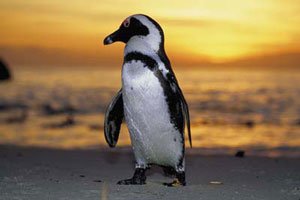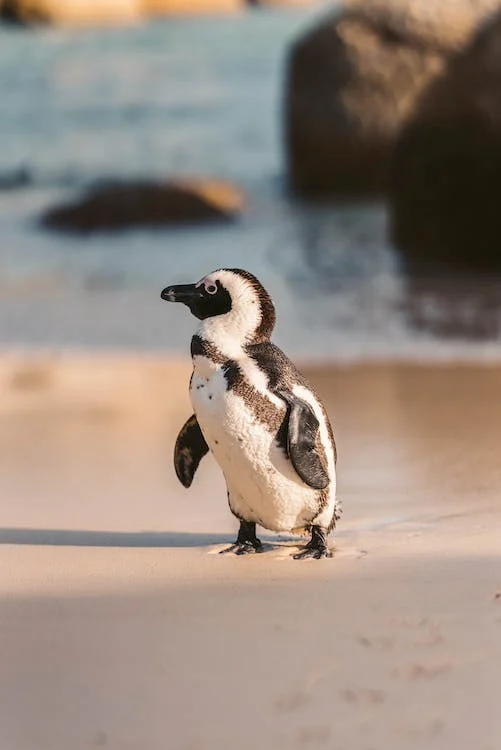It is a black and white animal that’s sprinkled with a dose of cuteness—we refer to it as an African Penguin. Also known as Spheniscus demersus, Cape Penguin, Black-footed Penguin, Jackass Penguin, or South African penguin, this penguin can be seen along the southwest coast of Africa from Namibia to Port Elizabeth and other islands. This species is the only penguin you can find in South Africa, making them a pleasant sight for both tourists and locals.
The African Penguin was first described by Carl Linnaeus, who called the bird species “Diomedea demersal.” It is classified under the genus Spheniscus, along with other three species: Magellanic Penguin, Humboldt Penguin, and Galapagos Penguin.
Back in the day, their numbers are flourishing across the coasts of southern Africa. However, due to several environmental factors, their numbers are on a continuous decline. For that reason, the International Union for Conservation of Nature (IUCN) Red List classified this species as Endangered.
Its seven levels of scientific classification are as follows:
Kingdom: Animalia
Phylum: Chordata
Class: Aves
Order: Sphenisciformes
Family: Spheniscidae
Genus: Spheniscus
Species: S. demersus
The physical characteristics of the African Penguin
An adult African Penguin grows for up to 60 cm or 2 ft tall and weighs an average of 3.6 kg. It has white and black plumage on its back and front, respectively, that serves as a camouflage to predators. These markers, like the human fingerprint, are unique to each penguin. Its black back is used to hide from predators that look at them from above, while its white belly can easily blend with the light to protect itself from the predators that look up to them from below.
An African Penguin has a horseshoe-shaped white band that starts around the eye, down to the chin, and then towards the beak. Another horseshoe-shaped black band is visible across its chest. It has white water-proof feathers that have black stripes and spots that stretch from the chest to the belly.
Female African Penguins are usually larger than male African Penguins—they have longer beaks and larger statures.
Consequently, juveniles do not have the conspicuous black-and-white markings. Instead, it has brown or greyish-blue underparts and feathers that darken as they grow older. This plumage transformation happens for three years.
The distribution and habitat of African Penguins
The African Penguins are seen in the Benguela and western Agulhas areas of southern Africa. They like forming large colonies in islands near Namibia, Hollamsbird Island, Bird Island in Algoa Bay, South Africa.
Today, the Boulders Beach near Simon’s Town in Betty’s Bay remains a tourist attraction because of the beach and the penguins that reside nearby.
They frequent rocky coastlines only in southwest Africa. Colonies of African Penguins gather together during the night, while they hunt together during the day.
The behavior of African Penguins
African Penguins mate for life. They are monogamous flightless birds that reach sexual maturity by the time they reach the age of four. During the breeding season, males become more distinguishable that their female counterparts due to their prints and patterns. A male African Penguin will emit a donkey-like display call to a female African Penguin, earning them the nickname Jackass Penguins. Once the female penguin accepts the male, they will breed together. This bonding would usually last until the future mating seasons.
The female African Penguin will dig a burrow under the rocks, under the bush, out of their excrements, or in the sand to lay two eggs. The pair takes equal responsibility during the incubation period, which usually lasts for 40 days. After the chicks hatch, both male and female African Penguins will keep the chicks warm and well-fed for the first month.
Once they reach 30 days old, the chicks will congregate and form “nursery groups” to protect themselves from predators. When they reach four months of age, they will leave the nursery groups once they have developed their adult plumage.
African Penguins can live for 10-125 years, but many of them do not achieve their full lifespan. This is because of guano removal, which has caused the loss of their nesting places and decreased food sources due to pollution and overfishing.
African Penguin’s diet
African Penguins feed on fish such as horse mackerel, anchovies, pilchards, round herrings, squids, and small crustaceans.
BOTSWANA BIRDS | SOUTH AFRICA BIRDS
NAMIBIA BIRDS | ZAMBIA BIRDS | ZIMBABWE BIRDS


